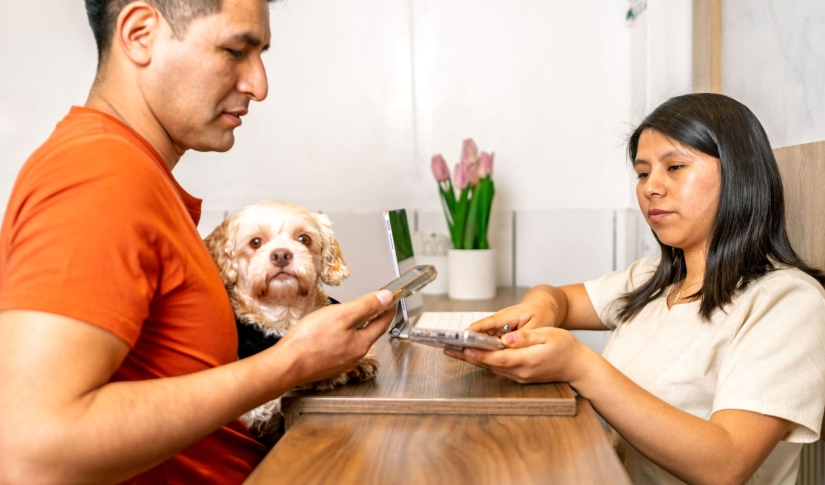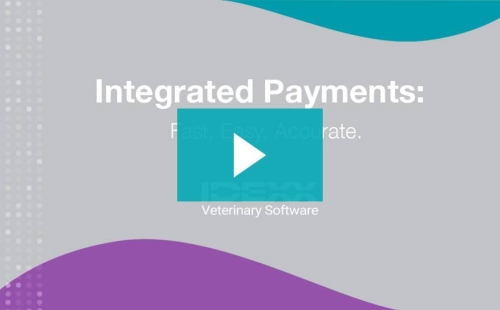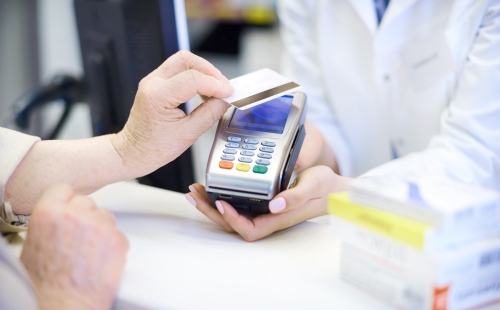6 Trends to Expect From the Future of Veterinary Payments in 2026

Technology moves quickly. The new gadget you bought last year might be obsolete by now, and the same can be true of outdated veterinary technology. Because pet owners expect flexibility and a wide range of payment options, the days of clunky card terminals and end-of-day reports are numbered.
Alongside rapid post-COVID restructuring, the industry’s payment processing preferences are changing. New tools help staff take routine payments with fewer delays and mistakes. In 2026, clinics will need systems that simplify and ensure the reliability of payments, allowing the team to focus more on patient care and less on paperwork.
Here’s where fintech trends are headed and what the future of veterinary payments could look like in 2026.
1. Embedded payments
Veterinary software platforms are increasingly incorporating payment processing into their base systems, a reflection of current fintech trends across many other industries. Built-in processing streamlines payments overall and enables teams to run cards, issue refunds, and post payments to patient charts in fewer steps, without needing to switch platforms or screens.
2. Contactless and mobile payments
Clients now expect to pay at the vet just as easily as at other businesses they patronize online and in person. Tapping a phone, clicking a link, and receiving an emailed receipt are the new norms of everyday life. To meet client demands and make the checkout process painless, more clinics must adopt these methods.
The goal of mobile payments and quick tap options is to have payment systems that work anywhere, including in the exam room, in the car, or at home. The future of veterinary payments will lean heavily on flexible options that fit into a client’s routine.
3. Integrated financing
Third-party financing options have been around for years. However, now these options are becoming integrated into veterinary software and provided to clients in advance of their visit or alongside estimates.
Broaching the finance topic in advance sets client expectations to help them avoid sticker shock. Additionally, it gives clients a chance to explore financing options and determine what they can afford, reducing uncomfortable money conversations in the practice and helping to shift payment discussions earlier in the care process.
4. Real-time visibility
Veterinary teams shouldn’t wait until the end of the day to examine the day’s revenue intake and identify mistakes or missed charges. In 2026, payment processors will focus on better reporting tools that offer real-time, automatic updates, so your team isn’t scrambling at the end of the night.
Some software tools can show which payments belong to which pet or family, so the team doesn’t have to guess. Verifying this information at some point during the day makes it easier to correct mistakes and avoid the end-of-day crunch.
5. Cybersecurity
Payment fraud and cybersecurity threats remain significant to veterinary teams and are likely to persist in 2026. Veterinary payment systems must use stronger safety features to protect clinic and client data, including encryption or scrambling of card and transaction details. The future of veterinary payments should ideally handle security automatically, alerting staff only in the event of a problem, so that teams can focus on patient care.
6. Recurring payments
Many clinics offer wellness plans to spread the annual cost of preventive care into monthly payments. The right outside platform or practice management software system can handle billing and collections for you.
The future of veterinary care may see expansion of the wellness plan model, including subscription or pay-over-time services, into other areas, such as rehabilitation or specialty care packages. Predictable monthly payments provide a stable source of income for the hospital, allow pets to get the care they need, and ensure clients can afford necessary veterinary care.
The future is flexible
As more pet owners expect personalized services, clinics must offer a broader range of payment methods. Digital wallets, buy-now-pay-later options, ACH transfers, and app or portal-based payments provide choices that clients don’t have to think too much about.
When clients can choose which payment method fits their needs in that moment, they’re left with a positive impression of the visit and clinic that will encourage them to return. In the future of veterinary payments, flexibility is the key to eliminating payment stress for teams and creating a happy, loyal client base.



